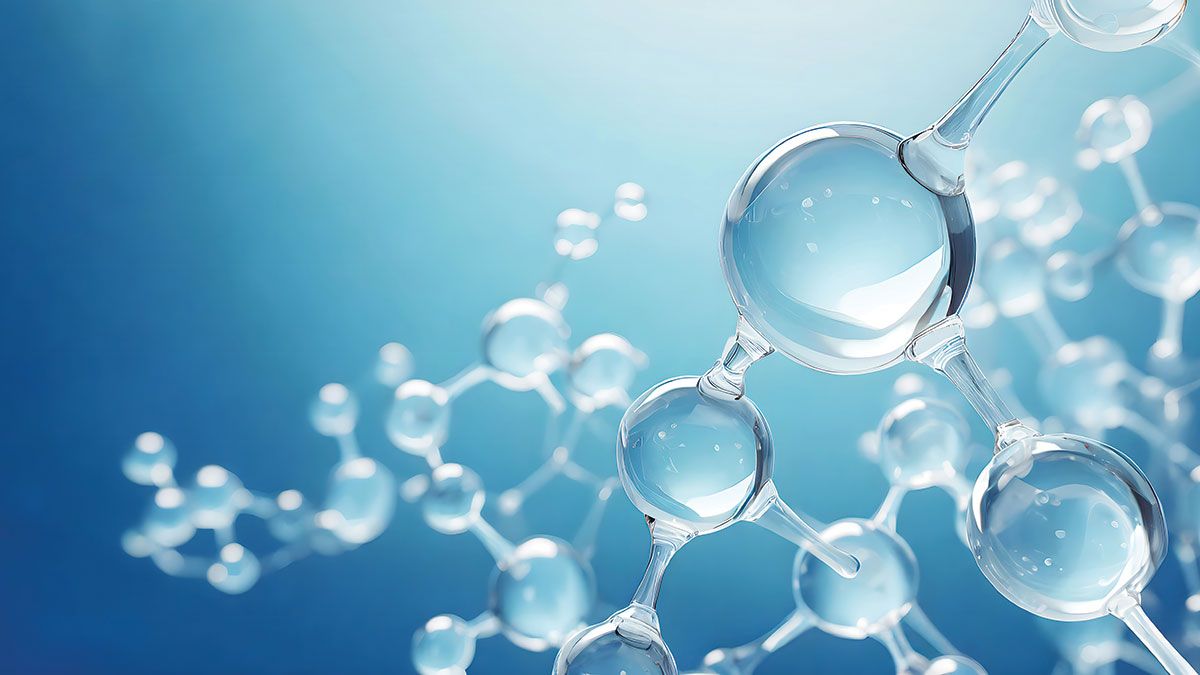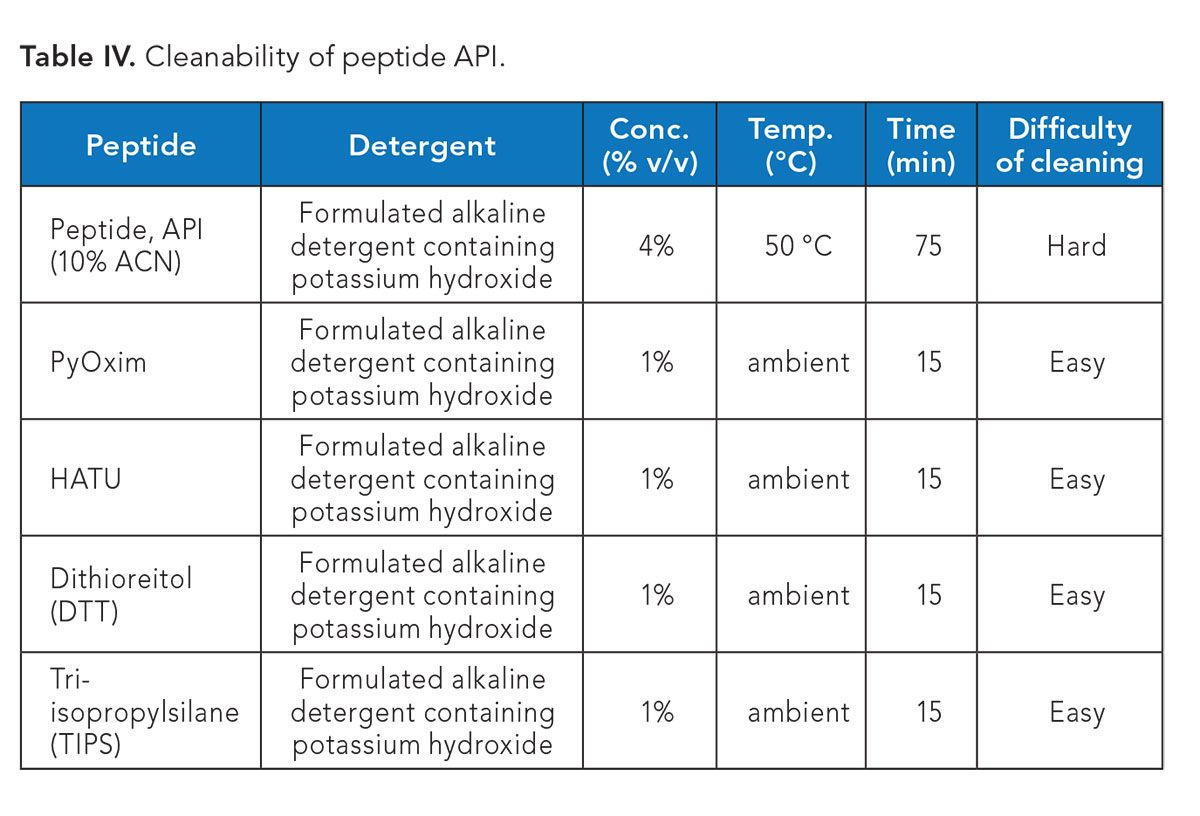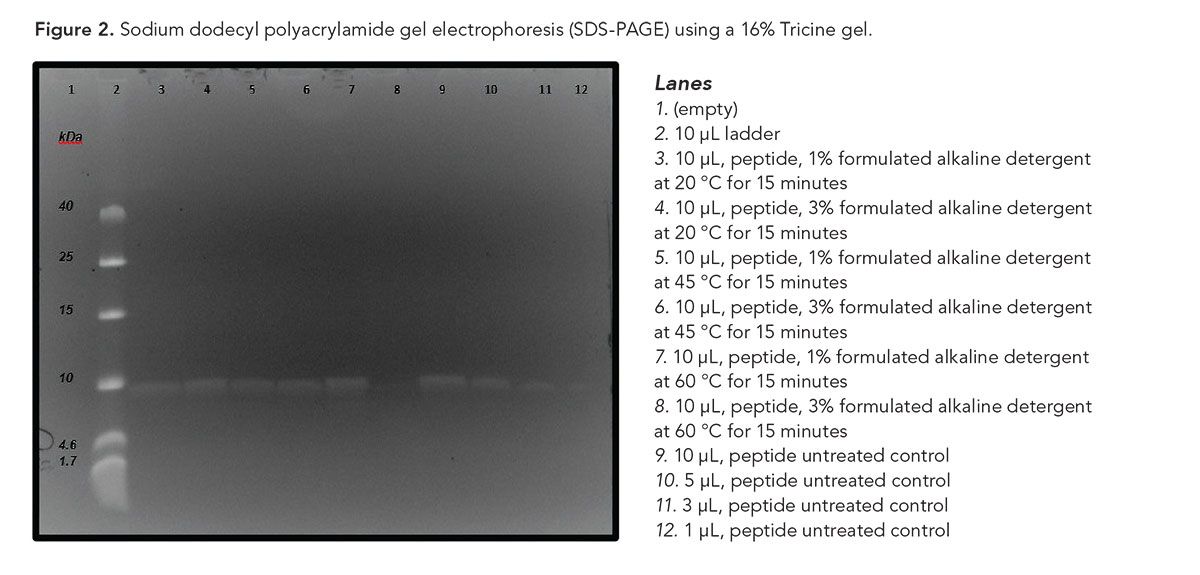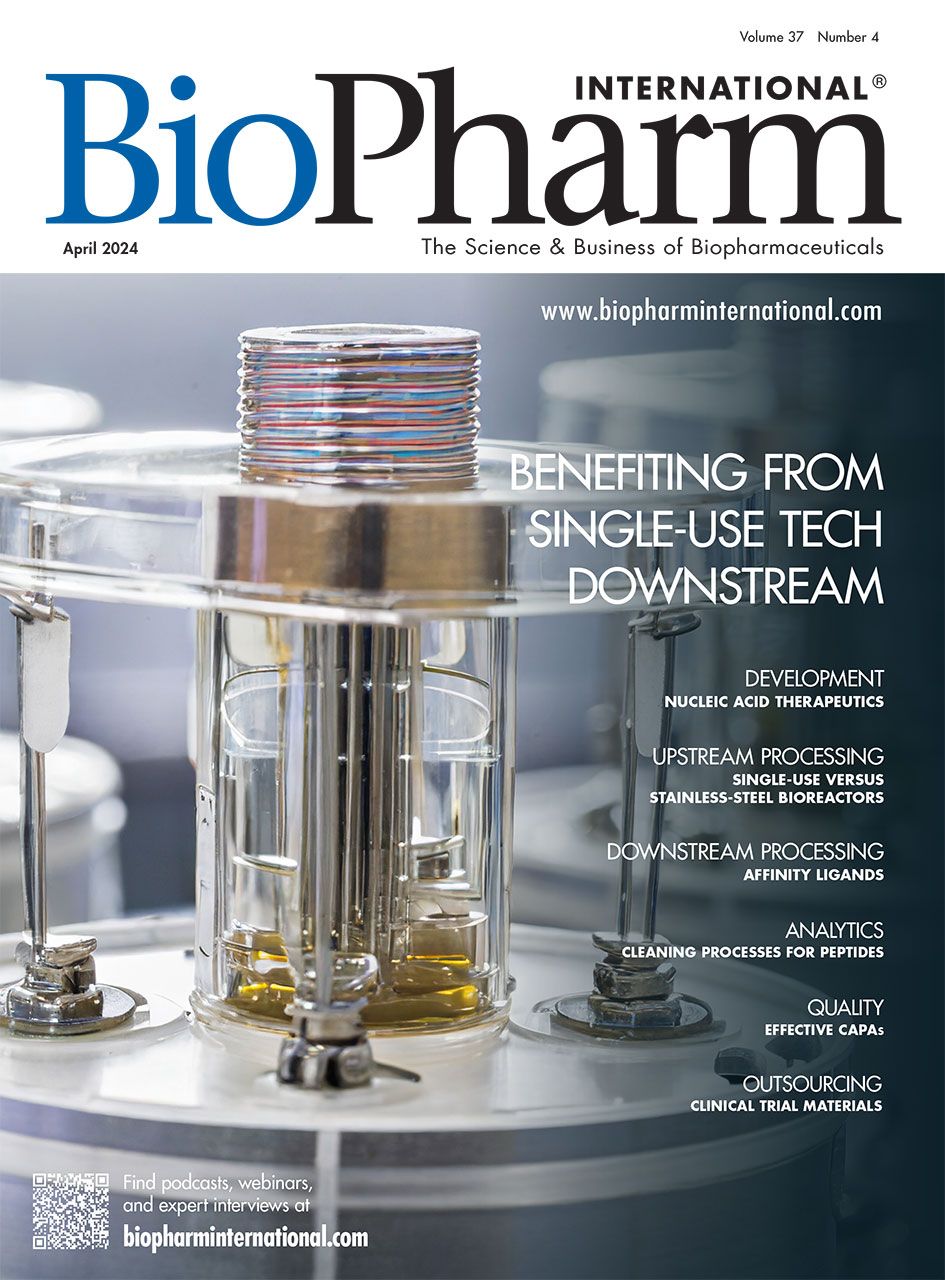Cleaning Process Design for Peptide Therapeutics
This article explores a grouping strategy for therapeutic peptides incorporating theoretical and experimental methodology and results to define a practical and scientifically justified cleaning procedure.
Colorful 3D glass molecules and atoms in blue background. | Image Credit © Drawbot/Stock.Adobe.com

There are more than 60 peptide therapeutics approved around the world and hundreds currently in clinical studies (1). A peptide is a polymer consisting of less than 100 amino acids (AA) linked by an amide or peptide bond. These therapeutics are desirable as they exhibit low toxicity and high biological activity. The two major peptide manufacturing pathways consist of recombinant and synthetic. Recombinant manufacturing uses an engineered living microorganism, such as Escherichia coli (E. coli), to synthesize the peptide. Synthetic peptide manufacturing originated with solution-phase peptide synthesis to groundbreaking solid-phase peptide synthesis (SPPS) and hybrid methods (2). Further advances in the SPPS technology improved the deprotection and cleavage steps (see Figure 1), resulting in the ability to safely manufacture synthetic peptides for personalized medicine to commercial manufacturing of greater than 100 kilograms (3).
Figure 1. Solid-phase synthesis of peptides with amino acid raw materials. [Figure courtesy of the authors]

The manufacturing of commercial peptide therapeutics requires current good manufacturing practices (CGMPs) including validation of the manufacturing and cleaning process (4,5). Cleaning validation consists of three phases: the design phase to understand critical cleaning parameters as well as defining cleaning quality attributes; the qualification phase to ensure the cleaning process consistently meets pre-established acceptance criteria; and the continuous monitoring phase to ensure the cleaning process remains in a state of control (6,7). If multiple peptides are manufactured in shared equipment, then a grouping or bracketing approach can be used to identify the worst-case peptide for validation (8–10). The most common factors used for grouping drug actives are solubility, toxicity, and difficulty of cleaning. Other considerations could include structure, molecular weight, availability of analytical methods, bioavailability, permeability, and degradation profiles (11).
Table I provides a grouping or bracketing matrix of nine peptide therapeutics that range in molecular weight from 987.5 to 4568 g/mol along with their solubility in water and cleaning procedures. Eight of the nine peptides were easily cleaned with 1% v/v formulated alkaline detergent at 50 oC for 15 minutes (cleaning procedure A), and one peptide required a second cleaning step using 1% v/v formulated acid detergent at 50 oC for 15 minutes (cleaning procedure B). In this example, cleaning procedure B was selected for all nine peptides, and a second formulated chlorinated alkaline wash was added to ensure degradation of the peptides. With the grouping strategy, a single cleaning procedure for all the products was implemented. The addition of the acid wash also eliminates the requirement for wastewater neutralization, reduces bioburden, and provides continual maintenance of the stainless-steel equipment (12).
Table I. A grouping or bracketing matrix for nine peptide therapeutics.

This study was performed almost 10 years ago, and therapeutic peptides are continuing to increase in length and complexity, which warrants revisiting the worst-case ranking with each additional peptide introduced. Within the past few years, a large biopharmaceutical company expressed an interest in a process and cleaner evaluation to perform solubility and cleaning evaluation of a new peptide as well as the process reagents used in the synthesis. In this article, the authors explore the solubility, difficulty of cleaning, and degradation of a new therapeutic peptide with a C225HNO structure), which includes the use of a modified sodium dodecyl polyacrylamide gel electrophoresis (SDS-PAGE) method for the analysis of lower molecular weight molecules.
Peptide solubility
Organic solvents are commonly used in the manufacture of peptide therapeutics but can present operational, safety, and environmental concerns with their use in cleaning commercial manufacturing equipment. The building blocks of peptides, 20 different amino acids, can vary in size, polarity, pH, and other factors included in Table II. The larger molecular weight amino acids are hydrophobic in nature, reducing the solubility in water. Other factors that affect solubility include the number of amino acids present, negative (acidic) or positive (basic) charge, pH, and temperature of the solution. The cleaning method, such as sonication, can also affect solubility. Laboratory testing evaluating the solubility of the peptide in water and/or cleaning agent may provide helpful information on cleaning as well as rinse and swab analysis.
Table II. Matrix of amino acids.

While other solvents in the manufacturing process show good solubility, aqueous detergents may clean at lower temperatures and concentrations. Optimizing this cleaning process reduces the risk of cross-contamination and saves the manufacturer cleaning time and overall costs. Specific parameters for solubility of the new peptide and reagents within the peptide manufacturing process can be explored through laboratory studies (see Table III).
Table III. Solubility at ambient and 50 °C of the reagents, peptide fragment, and API.

Organic solvents are traditionally used in peptide manufacturing as well as cleaning of manufacturing equipment. Due to the potential safety issues with using solvents, the solubility of the peptides and process reagents were investigated using various solvents and aqueous-based pharmaceutical detergents.
Reagents evaluated in the experiments are: Ethyl cyano(hydroxyimino)acetato-O2]tri-1-pyrrolidinylphosphonium hexafluorophosphate (PyOxim), Hexaflurophosphate Azabenzotriazole Tetramethyl Uronium (HATU), Dithiothreitol (DTT), and Tri-isopropyl silane (TIPS) along with a peptide API and peptide fragment.
- Solvents used in the experiments were as follows:
- Solvent 1 is 70% v/v dimethyl sulfoxide (DMSO)/30% acetonitrile (ACN) at ambient temperature.
- Solvent 2 is 70% v/v DMSO/30 % ACN at 50 °C.
- Solvent 3 is 30% ACN at ambient temperature.
- Solvent 4 is 30% ACN at 50 °C.
- Solvent 5 is 100% ACN at ambient temperature.
- Solvent 6 is formulated alkaline detergent at ambient temperature.
- Solvent 7 is formulated alkaline detergent at 50 °C.
The following procedure was used in the experiment:
- Wash and dry 500 mL volumetric flask.
- Measure 0.01 g, 0.1 g, 1 g, or 10 g of the residue on the analytical balance.
- Add 100 g of solvent or formulated alkaline detergent into volumetric flask.
- Add a measured amount of the residue into volumetric flask.
- Testing is performed at ambient temperature and 50 °C.
- Start mixing by vigorously shaking.
- Record the time until dissolved.
- Results are recorded in the notebook.
Peptide cleaning
Scientifically justified cleaning parameters provide a foundation for cleaning validation within a facility. Cleaning validation involves continued monitoring of the cleaning process, including testing for residue levels necessary to verify cleanliness of the equipment and meet regulatory requirements. Critical cleaning parameters per the cleaning method and dirty-hold condition are defined as the temperature, chemistry, concentration, time, and even water quality (13). These parameters can be assessed and optimized in the laboratory using coupon studies to provide a customer with a robust cleaning procedure (14). By implementing these recommended parameters, peptide manufacturers can minimize the risk of contamination and ensure the production of high-quality peptides.
In the laboratory, an analyst optimized the cleaning parameters of a large biopharmaceutical company. The study identified a cleaning method that removed the worst-case residue in the most effective and efficient way. These tests were performed on 304 stainless-steel with a 2B finish to simulate a worst-case cleaning of a more common, higher grade, 316L stainless steel used in manufacturing process equipment. The peptide API and other residues used in the process were coated onto the surface and air-dried at ambient temperature for 24 hours. The coated coupons were then evaluated based upon the specific cleaning process requirements, such as agitated immersion cleaning conditions. Seen in Table IV, the worst-case residue was identified as the peptide API. The peptide API was only soluble in ACN or DMSO. The cleanability of the peptide API required a higher temperature and concentration compared to the other residues in the process and previously tested peptides.
Peptide degradation
Lab-scale studies have proven to show an array of cleaning parameters that can degrade or fragment peptides. It is known that when a protein is exposed to elevated temperatures and high pH solutions for extended periods of time, it will denature, aggregate, or completely degrade and will no longer exhibit activity (15–17). Inactivation of the peptide API during cleaning and sterilization has important implications for cleaning validation of multiproduct equipment. The toxicity of human therapeutic proteins (HTPs) is determined by pharmacological activity. Gelatin can be used as a reference impurity for inactive HTP fragments (18). In terms of chemical composition, the protein fragments in gelatin are comparable to the HTP fragments in the process residue. Protein fragments in gelatin range from 15 kDa to 400 kDa, which is much higher than the 10 kDa threshold for weak immunogens (19).
Utilization of SDS-PAGE analysis was supported by the following statement in Annex 15 of the European Union’s GMP guideline, “therapeutic macromolecules and peptides are known to degrade and denature when exposed to pH extremes and/or heat, may become pharmacologically inactive” (5).With the use of a control and a neutralization step, the therapeutic macromolecule, such as monoclonal antibodies (mAbs), can be observed after being introduced to a set of cleaning parameters (time, action, concentration, and temperature [TACT]). These differences can be seen within a polyacrylamide gel with a reference ladder.
These custom peptides can also be analyzed in the lab via SDS-PAGE. The SDS-PAGE method, commonly used for mAbs, required modification, as detailed below, to address the lower molecular weight range of custom peptide APIs. The peptide was solubilized in DMSO and treated with 1% and 3% v/v formulated alkaline detergent at temperatures ranging from ambient temperature to 60 °C ± 5 °C. The samples were neutralized to ambient temperature and neutral pH of 7.4–9.5, depending on the concentration of the detergent. The neutralized peptide is reacted with an anionic detergent, in this case, SDS, forming negatively charged complexes. Based on the sizes of the treated and untreated peptides, the complexes will travel through the charged polyacrylamide gel by electrophoresis.
A method of gel electrophoresis using premade commercially available 16% Tricine, 12-well gels along with appropriate reagents was developed. Small aliquots of peptides were treated with different concentrations of detergents and temperatures, while time remained constant at 15 minutes. This is the length of a typical cleaning cycle in a washer or CIP system (see Tables I and IV). The neutralized peptide detergent solutions were loaded into the wells with a 1x running buffer. An electrical current was applied to the system at 120 V for 90 minutes. The rate at which the treated peptide moves was affected by their molecular weight, charge, and gradient of gel. The differences of the treated samples versus the controls were directly analyzed and the degradation of peptides assessed.
Table IV. Cleanability of peptide API.

In Figure 2, the peptide control was shown in lane 9 with decreasing concentrations through lane 12. The distinct band is seen at 10 kDa, while the treated samples show banding that can be compared to the control band’s intensity. The treatments with the detergent up to a 1% v/v concentration at 60 °C for 15 minutes saw no differences in the degradation of the peptide versus the untreated controls. This peptide saw degradation at 3% v/v formulated alkaline detergent at 60 °C for 15 minutes. Additional testing at different concentrations, temperatures, and exposure times can be performed to optimize performance.
Figure 2. Sodium dodecyl polyacrylamide gel electrophoresis (SDS-PAGE) using a 16% Tricine gel. [Figure courtesy of the authors]

Discussion
Protein assays can be used to determine if a protein or peptide that has been degraded exhibits a loss of biological activity. This was not determined in the lab cleaning evaluations. The cleaning, solubility, and degradation of the process solutions, peptide API, and fragment were assessed and showed that a cleaning procedure can remove the process residues and fully degrade the peptide API. Based on several evaluations of mAbs and peptides exposed to typical elevated temperature alkaline CIP cleaning parameters, the proteins were degraded. Understanding the carry-over risk associated with the peptide API (or degraded peptide API) is integral to the overall lifecycle of the cleaning process.
Conclusion
Practical and scientifically justified quality risk management is the foundation of a CGMP compliant manufacturing facility. The design transfer of a new therapeutic peptide product within a multiproduct facility should include a thorough cleaning and acceptable limits review of the product, reagents, and intermediates compared to existing products. The review should include an assessment of solubility, difficulty of cleaning, and degradation of the active drug substance. The laboratory testing proved that the new peptide was more challenging to clean from the surface than prior peptides and reagents. The new peptide manufacturing would require a modification to the cleaning program or a dedicated cleaning procedure. The recommended cleaning procedure for the therapeutic peptide was also successful in degrading the peptide when assessed using a 16% tricine SDS-PAGE methodology.
References
- Martin, V.; et.al., Greening the Synthesis of Peptide Therapeutics: An Industrial Perspective. RSC Adv., 2020 10, 42457-42492. DOI: 10.1039/D0RA07204D
- Rasmussen, J. H. Synthetic Peptide API Manufacturing: A Mini Review of Current Perspectives for Peptide Manufacturing. Bioorg. Med. Chem. 2018 June 1 26(10) DOI: 10.1016/j.bmc.2018.01.018.
- Pennington, M. W.; Zell, B.; Bai, C. J. Commercial Manufacturing of Current Good Manufacturing Practice Peptide Spanning the Gamut from Neoantigen to Commercial Large-scale Products. Med. Drug Discov. 2021, 9, 100071.
- FDA. 21 CFR Part 211, Current Good Manufacturing Practices for Finished Pharmaceuticals, Sept. 29, 1978.
- EC, Annex 15: Qualification and Validation. EU Guidelines for Good Manufacturing Practice for Medicinal Products for Human and Veterinary Use, Revised March 30, 2015.
- FDA. Guidance for Industry. Process Validation: General Principles and Practices (January 2011). https://www.fda.gov/downloads/Drugs/.../Guidances/UCM070336.pdf
- Lopolito, P.; Rivera, E. Cleaning Validation: Process Life Cycle Approach. In Contamination Control in Healthcare Product Manufacturing, Vol.3, edited by R. Madsen and J. Moldenhauer (PDA and DHI Publishing, 2014).
- EC. Annex 15, Section 10.10. European Union Guideline for Good Manufacturing Practices for Medicinal Products for Human and Veterinary Use, revised March 30, 2015.
- WHO. Guideline on Validation. Working Document QAS/16.666. May 2016.
- FDA. Validation of Cleaning Processes: Guide to Inspections Validation of Cleaning Processes. July 1993. https://www.fda.gov/inspections-compliance-enforcement-and-criminal-investigations/inspection-guides/validation-cleaning-processes-793
- Van Houtte, O.; Houtte, O. V.; Hadziselimovic, D.; Tyson, S. M. Master Soil Selection for Cleaning Validation of Parts Washers. Pharm. Eng., 2021 May/June.
- Rivera, E.; Lopolito, P.; Lopolito, P.; Hadziselimovic, D. A Risk-Based Approach to Stainless Steel Equipment Maintenance. Pharm. Technol. 2017, 41 (2), 54-60.
- Verghese, G. Selection of Cleaning Agents and Parameters for cGMP Processes. Proceedings of the INTERPHEX Conference, Philadelphia. Reed Exhibition Co, Norwalk, CT, 32-44, June 1998.
- Hadziselimovic, D.; Lopolito, P. Polymer Residue Cleaning Method Development: Case Study. In Cleaning and Cleaning Validation, Vol.2, edited by Paul L. Pluta (PDA and DHI Publishing, 2010).
- Federici, G.; Dupré, S.; Barboni, E.; Fiori, A.; Costa, M. Insulin Dissolution at Alkaline pH. FEBS Letters, 1973 32 (1) May.
- Kendrick, K.; Canhoto, A.; Kreuze, M. Analysis of Degradation Properties of Biopharmaceutical Active Ingredients as Caused by Various Process Cleaning Agents and Temperature. Journal of Validation Technology, 2009 Summer, p 69-77.
- Sharnez, R.; Spencer, A.; Romero, J.; et. al. Methodology for Assessing Product Inactivation during Cleaning: Part 1: Experimental Approach and Analytical Methods. Journal of Validation Technology 2012 18 (4), p 42-45.
- Sharnez, R.; Spencer, A.; Bussiere, J.; et. al. Biopharmaceutical Cleaning Validation: Acceptance Limits for Inactivated Product Based on Gelatin as a Reference Impurity. Journal of Validation Technology, 2013 January.
- Sharnez. R. Degradation of Proteins during Cleaning and Sanitization. Part 1: Implications for Cleaning Characterization and Analytical Method Development. Advances in Pharmaceutical Validation. 2022 6 (4).
About the authors
Guy Houser is an independent consultant. Dijana Hadziselimovic is a technical services laboratory manager, STERIS. Paul Lopolito* is a technical services director, STERIS, plopolit@steris.com. *To whom all correspondence should be addressed.
Article details
BioPharm International®
Vol. 37, No. 4
April 2024
Pages: 25-30
Citation
When referring to this article, please cite it as Houser, G.; Hadziselimovic, D.; Lopolito, P. Cleaning Process Design for Peptide Therapeutics. BioPharm International 2024 37 (4).
